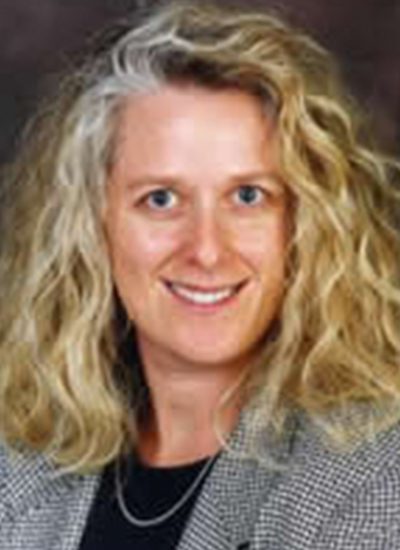Raina Margaret Maier
Publications
Phytostabilization is a remediation technology that uses plants for in-situ stabilization of contamination in soils and mine tailings. The objective of this study was to identify native plant species with potential for phytostabilization of the abandoned mine tailings in Nacozari, Sonora in northern Mexico. A flora of 42 species in 16 families of angiosperms was recorded on the tailings site and the abundance of the most common perennial species was estimated. Four of the five abundant perennial species showed evidence of regeneration: the ability to reproduce and establish new seedlings. A comparison of selected physicochemical properties of the tailings in vegetated patches with adjacent barren areas suggests that pH, electrical conductivity, texture, and concentration of potentially toxic elements do not limit plant distribution. For the most abundant species, the accumulation factor for most metals was 1, with the exception of Zn in two species. A short-term experiment on adaptation revealed limited evidence for the formation of local ecotypes in Prosopis velutina and Amaranthus watsonii. Overall, the results of this study indicate that five native plant species might have potential for phytostabilization of the Nacozari tailings and that seed could be collected locally to revegetate the site. More broadly, this study provides a methodology that can be used to identify native plants and evaluate their phytostabilization potential for similar mine tailings.
PMID: 12964241;Abstract:
In summary, biosurfactants are an example of a class of microbial natural products that has coevolved among many genera. But whereas the biosurfactants produced in the bacterial and archaeal domains are convergent in function (suggesting that they are very important), they have developed in parallel with respect to genotype and phenotype (the surfactants are not related genetically or in terms of molecular structure). Because of this parallel evolution, currently available molecular screening techniques are of little use for the discovery of new biosurfactants. Development of such techniques will continue to be problematic because there is no relationship between the surfactants produced by different microbial genera and even species. Yet, the potential for application of biosurfactants and other natural products is great due to growing demand for biodegradable and environmentally friendly analogues for synthetic chemicals.
Rhamnolipids are surface-active molecules produced by Pseudornonas aeruginosa as congener mixtures. They are considered "green" alternatives to synthetic surfactants used in industrial, remediation and pharmaceutical applications. Optimizing yield as well as controlling congener distribution are necessary steps for successful commercialization of rhamnolipids. This study used a mixture of glucose and fatty acids of different chain length (C-12-C-22) and saturation (C-18:1 and C-18:2) to produce monorhamnolipids and determine the effect of fatty acid substrates on rhamnolipid yield, percent carbon conversion and congener distribution. Results show that 1% glucose + 0.25% stearic acid (C-18) produced the greatest yield (2.1 g L-1) compared to other glucose-fatty acid combinations (0.8-1.8 g L-1)(.) Various glucose + C-18 ratios were then tested to optimize yield and percent substrate carbon conversion to monorhamnolipid. Results revealed a positive linear correlation between the mass percent of C-18 used and the percent carbon conversion. A mass percent of 67% C-18 was optimal resulting in a 44% carbon conversion and a yield of 13.7 gL(-1) monorhamnolipid. For all fatty acid substrates tested, the RhaCioCio was the most abundant and RhaC(10)C(12:1) was the least abundant of the four major congeners produced. However, the relative amount of RhaC(10)C(8) and RhaC(10)C(12) congeners was dependent on several factors: in general, fatty acid substrates with relatively short chain length (C-12 and C-14), unsaturated fatty acid substrate (c(18:2)), and longer cultivation time resulted in a higher RhaC(10)C(8)/RhaC(10)C(12) ratio. These findings will assist in mass production of monorhamnolipids and controlling the specific congeners produced. (C) 2014 Elsevier Ltd. All rights reserved.
PMID: 10520591;Abstract:
While microbial growth is well-understood in pure culture systems, less is known about growth in intact soil systems. The objective of this work was to develop a technique to allow visualization of the two-dimensional spatial distribution of bacterial growth on a homogenous soil surface. This technique is a two-step process wherein an agar lift is taken and analyzed using a universal gene probe. An agar lift is comprised of a thin layer of soil that is removed from a soil surface using an agar slab. The agar is incubated to allow for microbial growth, after which, colonies are transferred to a membrane for conventional bacterial colony DNA/DNA hybridization analysis. In this study, a eubacterial specific probe was used to demonstrate that growing bacterial populations on soil surfaces could be visualized. Results show that microbial growth and distribution was nonuniform across the soil surface. Spot supplementation of the soil with benzoate or glucose resulted in a localized microbial growth response. Since only growing colonies are detected, this technique should facilitate a greater understanding of the microbial distribution and its response to substrate addition in more heterogenous soil systems.
The Superfund Research Program (SRP) is an academically based, multidisciplinary, translational research program that for 25 years has sought scientific solutions to health and environmental problems associated with hazardous waste sites. SRP is coordinated by the National Institute of Environmental Health Sciences (NIEHS). It supports multi-project grants, undergraduate and postdoctoral training programs, individual research grants, and Small Business Innovation Research (SBIR) and Technology Transfer Research (STTR) grants.


